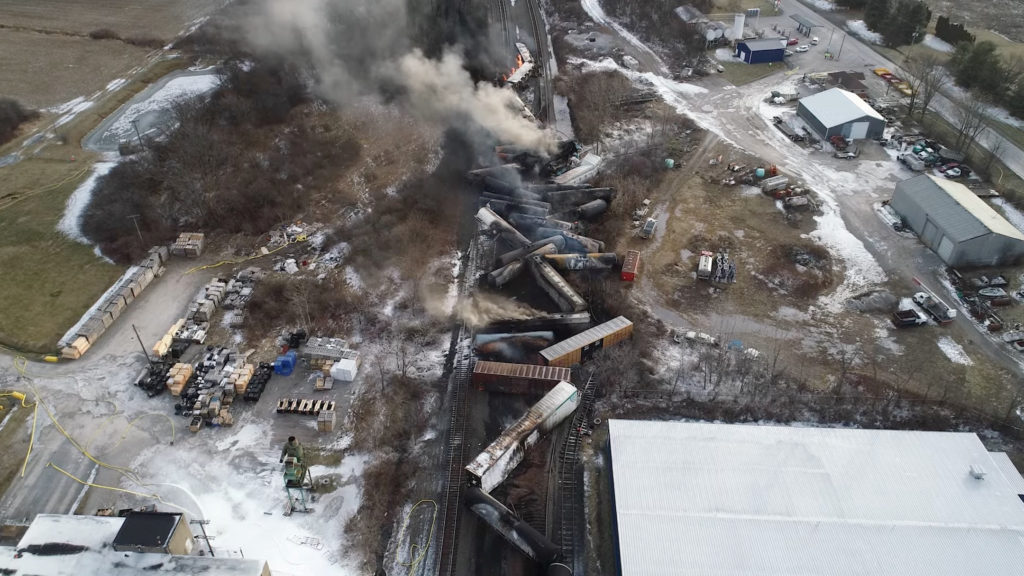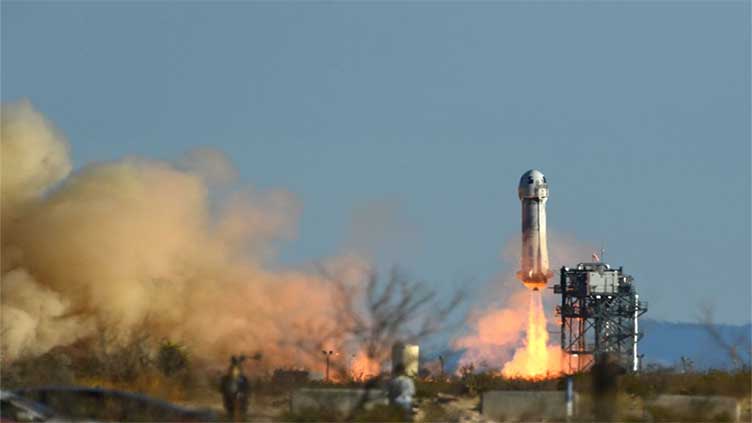Ohio Derailment Aftermath: Lingering Toxic Chemicals In Buildings Raise Concerns

Table of Contents
Contaminant Identification and Spread
The derailment released a cocktail of hazardous substances, posing significant risks to the surrounding environment and population.
Types of Toxic Chemicals
Several highly toxic chemicals were released, including vinyl chloride, butyl acrylate, and others. These chemicals present a range of acute and chronic health risks.
- Vinyl Chloride: Known to be a human carcinogen, linked to liver cancer, brain tumors, and other cancers. (Source: CDC)
- Butyl Acrylate: An irritant that can cause respiratory problems, skin irritation, and eye damage. (Source: EPA)
- Other Chemicals: The exact composition of the released chemicals is still under investigation, adding to the complexity of assessing the long-term impact. Further analysis is necessary to fully understand the extent of contamination.
Identifying and measuring these chemicals in buildings requires sophisticated analytical techniques, including air sampling, soil testing, and water analysis. These methods help determine the level of contamination and inform remediation strategies.
Pathways of Contamination
The spread of these toxic chemicals occurred through multiple pathways:
- Air Dispersion: Wind patterns carried plumes of vaporized chemicals, potentially contaminating buildings and surrounding areas.
- Water Runoff: Rainfall and snowmelt could have transported chemicals into local waterways and groundwater sources.
- Soil Contamination: Chemicals seeped into the soil, potentially leaching into groundwater and impacting nearby buildings through foundation contact.
Factors like wind direction, soil permeability, and the building materials themselves influence the extent of contamination. Porous materials are particularly susceptible to absorbing and retaining these chemicals.
Health Concerns for Residents and First Responders
The release of Ohio derailment toxic chemicals has resulted in significant health impacts on both residents and first responders.
Short-Term Health Effects
Residents and first responders near the derailment site reported a range of immediate health problems:
- Respiratory Issues: Coughing, shortness of breath, wheezing.
- Headaches and Dizziness: Indicative of chemical exposure.
- Skin Irritation: Rashes, burning sensations.
- Eye Irritation: Burning, redness, watering eyes.
The number of reported health issues underscores the urgency of addressing the contamination. Comprehensive epidemiological studies are needed to establish a clear link between exposure and specific health outcomes.
Long-Term Health Risks
Exposure to these chemicals carries the potential for severe long-term health consequences:
- Cancer: Many of the released chemicals are known or suspected carcinogens.
- Reproductive Problems: Some chemicals can interfere with reproductive health.
- Neurological Disorders: Exposure can potentially lead to neurological problems.
The long latency period associated with many chemical-induced diseases makes assessing the full extent of long-term health effects a challenging, ongoing process. Long-term health monitoring of the affected population is crucial.
Government Response and Cleanup Efforts
The response to the Ohio derailment and its aftermath involves multiple government agencies at the federal and state levels.
Federal and State Involvement
Both the EPA and Ohio EPA are heavily involved in the cleanup and investigation. Actions taken include:
- Air and Water Monitoring: Continuous monitoring of air and water quality to track chemical levels.
- Soil Sampling and Analysis: Assessment of soil contamination levels.
- Health Assessments: Conducting health assessments of residents and first responders.
- Enforcement Actions: Holding responsible parties accountable for the cleanup.
However, criticisms remain regarding the speed and effectiveness of the response, particularly concerns about the initial communication and transparency.
Building Remediation and Testing
Decontaminating buildings and testing for harmful chemicals present significant challenges:
- Air Scrubbing: Removing contaminated air from buildings.
- Soil Removal: Excavating and removing contaminated soil.
- Water Treatment: Cleaning up contaminated water supplies.
The cost of remediation is substantial, and the process can be time-consuming, requiring specialized expertise and equipment. The long-term implications for affected property values are also a significant concern.
Conclusion
The Ohio derailment toxic chemicals continue to pose a substantial threat to the health and well-being of the community. The lingering presence of these toxins necessitates sustained monitoring, robust cleanup efforts, and long-term health surveillance. The potential for long-term health problems, coupled with the economic and environmental consequences, highlights the need for comprehensive and transparent action. We must demand accountability from those responsible and ensure adequate resources are dedicated to addressing the impact of this devastating event. If you live near the affected area, actively seek information on available health resources and testing, and don't hesitate to contact relevant authorities regarding your concerns about Ohio derailment toxic chemicals and their potential impact on your health and property.

Featured Posts
-
 Middle Management A Key Driver Of Employee Engagement And Productivity
May 18, 2025
Middle Management A Key Driver Of Employee Engagement And Productivity
May 18, 2025 -
 Nwodims Weekend Update Blunder Stuns Snl Viewers
May 18, 2025
Nwodims Weekend Update Blunder Stuns Snl Viewers
May 18, 2025 -
 Blue Origin Cancels Rocket Launch Vehicle Subsystem Problem Delays Mission
May 18, 2025
Blue Origin Cancels Rocket Launch Vehicle Subsystem Problem Delays Mission
May 18, 2025 -
 Easy A On Bbc Three Hd Tv Guide And Listings
May 18, 2025
Easy A On Bbc Three Hd Tv Guide And Listings
May 18, 2025 -
 Space Defense Firm Voyager Technologies Announces Public Offering
May 18, 2025
Space Defense Firm Voyager Technologies Announces Public Offering
May 18, 2025
Latest Posts
-
 Snls White Lotus Parody Bowen Yang And Aimee Lou Woods Viral Moment
May 18, 2025
Snls White Lotus Parody Bowen Yang And Aimee Lou Woods Viral Moment
May 18, 2025 -
 Bowen Yang Asks Lorne Michaels To Replace Him As Jd Vance On Snl
May 18, 2025
Bowen Yang Asks Lorne Michaels To Replace Him As Jd Vance On Snl
May 18, 2025 -
 Navigating Identity And Tradition A Critical Look At The Wedding Banquets Queer Themes
May 18, 2025
Navigating Identity And Tradition A Critical Look At The Wedding Banquets Queer Themes
May 18, 2025 -
 Bowen Yang On Snls White Lotus Parody Featuring Aimee Lou Wood A Must See Reaction
May 18, 2025
Bowen Yang On Snls White Lotus Parody Featuring Aimee Lou Wood A Must See Reaction
May 18, 2025 -
 Bowen Yangs Hilarious Reaction To Snls White Lotus Parody With Aimee Lou Wood
May 18, 2025
Bowen Yangs Hilarious Reaction To Snls White Lotus Parody With Aimee Lou Wood
May 18, 2025
